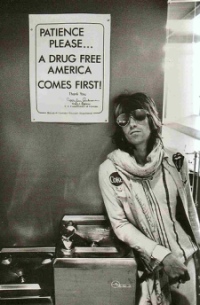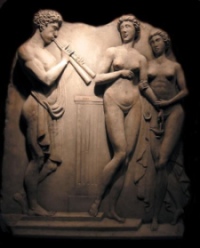I’ve finally worked my way through last Sunday’s newspapers in time for this Sunday’s to fill up the in-basket. Of particular note was Peter Aspden’s column in the Weekend Financial Times. He picks up on a number of themes that have been surfacing in recent conversations. Aspden observes that culture and economies run in cycles, and that a down economy may signal a return of a more pungent cultural scene.
In a high economy, capital replaces labor in the machinery of cultural production. Works are primarily created as commercial ventures; they have a business plan, an expected return on investment, and a polished level of disconnected technical professionalism.
Aspden identifies the trends he’ll be looking for in the new year:
- Cultural Promiscuity (global silk-road type connectivity and mashups)
- Pungent Pop Culture, a return to seriousness
- Profundity and complexity welcomed once again
- The return of Art Cinema (and a farewell to cinematic infantilism)
- Art Galleries returning to the sterner business of moving hearts and minds
In a down economy, labor replaces capital in the cultural work product. The industrial pop culture complex will turn to high glamor / high gloss products as they did during the great depression. It’s a formula that depends on owning the means of production, large concentrated audiences, low prices and controlled distribution.
Price of Movie Tickets
1940 $0.24
1939 $0.23
1936 $0.25
1935 $0.24
1934 $0.23
1929 $0.35
1924 $0.25
1910 $0.07
As means of production has gone digital, and the distribution networks have gone open, the old formulas are harder to pull off. The studios will have to depend on more and more on special effects and simulated realities to generate the requisite buzz– machines replacing humans. The return to a pungent culture is a cyclical event– the classic example for me was Jerzy Grotowski’s Poor Theater.
Theater should not, because it could not, compete against the overwhelming spectacle of film and should instead focus on the very root of the act of theater: actors in front of spectators.
However this move to the digital appears to be a more foundational change, the very axis of the cycle has been radically shifted. While the high end can go ever higher, the field of play has been opened for a new generation of artists. High and low have lost their polar relationship; real connection can happen across the Network through multiple endpoints. The cost of producing high quality digital output continues to go down, while the talent required to produce high quality digital output remains ever the same.
While a film on a large screen in a movie theater isn’t the same as watching on an iPhone or a laptop; nor is a film the same a grand opera at its best. New media will breed new forms– new methods of reading and writing. As the technology falls away in favor of the performance, perhaps we’ll see some of Aspden’s predictions come true. It could be as simple as a camera, some light, three people dancing and some narration– A Band of Outsiders.
Comments closed
